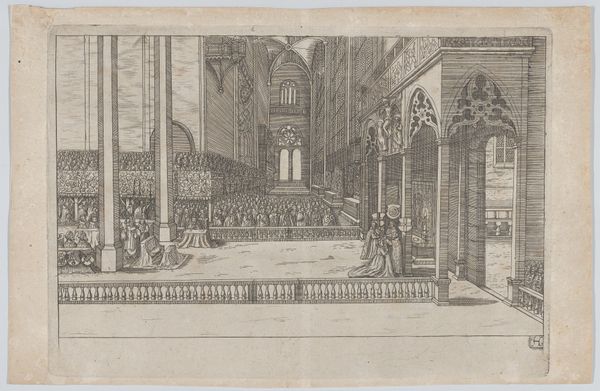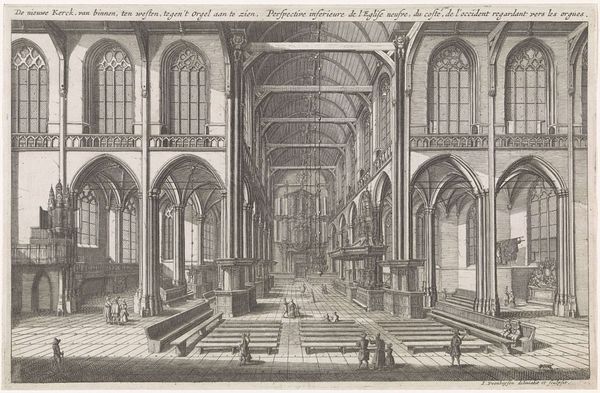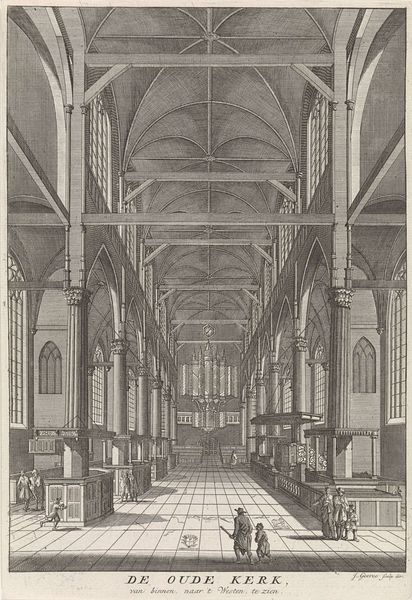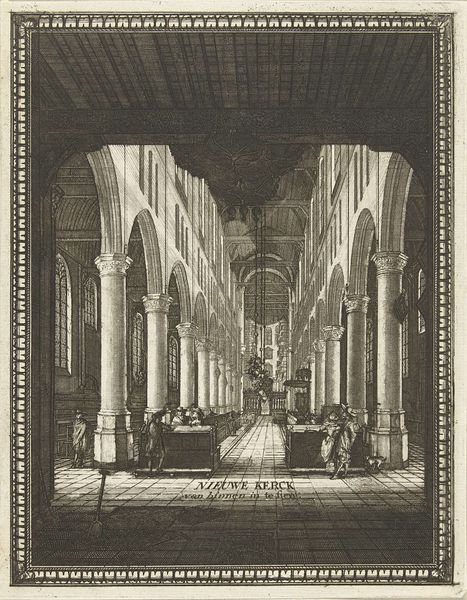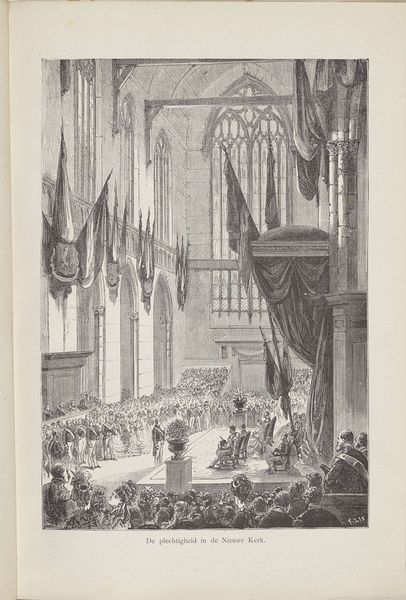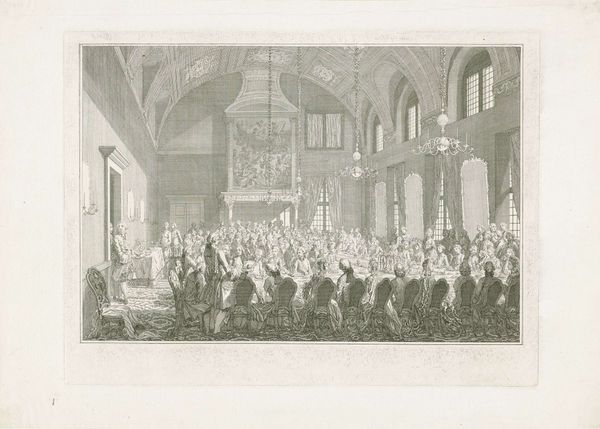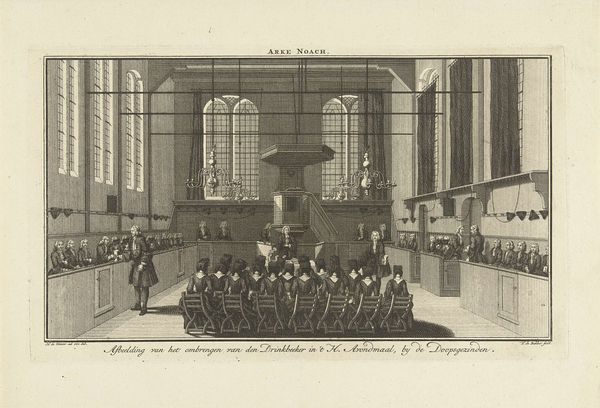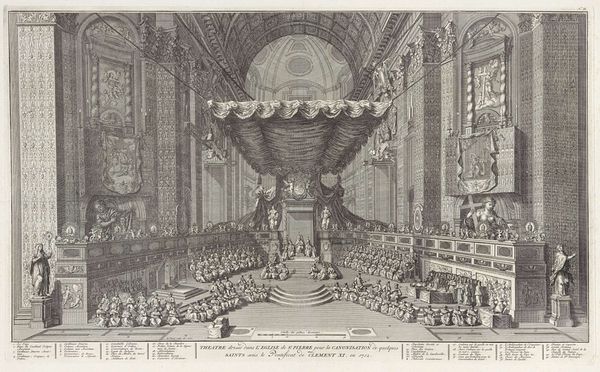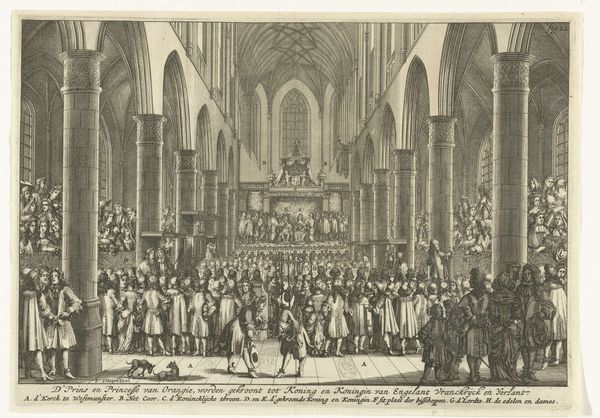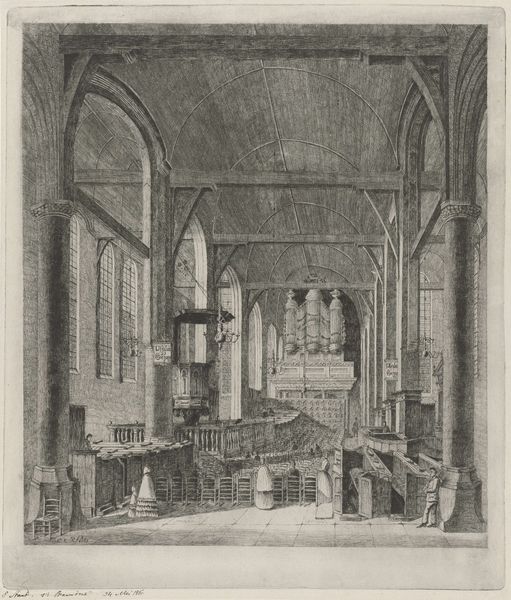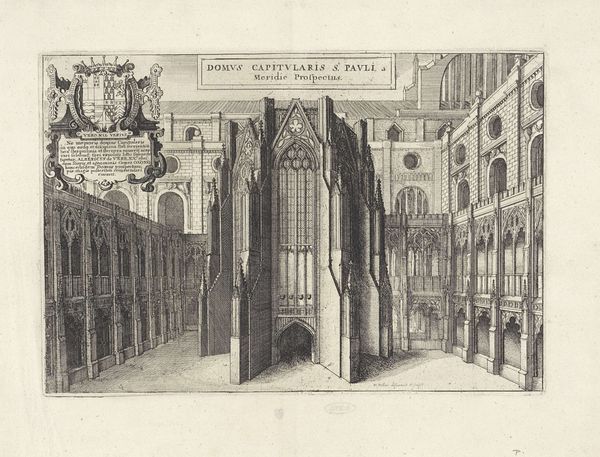
Inhuldiging van Willem Frederik, prins van Oranje als souverein vorst, 1814 1814
0:00
0:00
engraving
#
neoclacissism
#
perspective
#
figuration
#
line
#
cityscape
#
history-painting
#
engraving
Dimensions: height 80 mm, width 104 mm
Copyright: Rijks Museum: Open Domain
Curator: What an interesting visual record we have here. This engraving by Noach van der Meer II, created in 1814, depicts "The Inauguration of William Frederick, Prince of Orange as Sovereign Prince." It’s currently housed in the Rijksmuseum. Editor: The sheer formality of it strikes me first—the rigid rows of figures and elaborate staging... it's quite an imposing scene, isn't it? There’s almost a chill in the air. Curator: Absolutely. Van der Meer was a master of line, capturing the architectural details with precision. Notice how the linear perspective emphasizes the depth of the space. The material execution in engraving is significant; it was a popular, reproducible medium, making this a widely disseminated image of a pivotal political moment. Editor: Precisely, and that wide dissemination is crucial. It functions as propaganda, really—a tool to legitimize and cement power after a period of immense social and political upheaval. The choice of Neoclassicism, with its associations of order and reason, feels very deliberate. It connects this new regime with a desired image of stability. Who exactly would have purchased or been granted this work? Curator: Likely government officials and wealthy merchants would have been consumers of these kinds of images, to visually affirm their stake and loyalty in the new order. Consider, also, the labor involved: the meticulous hand of the engraver reproducing this scene for mass consumption. The act of distributing images such as this plays a significant role in reinforcing the sovereignty's claims. Editor: The standardization, almost anonymity, of the individual figures in the audience serves to reinforce the authority of the Prince of Orange, doesn't it? Their physical subservience underscores his elevated position and symbolic power. The scene is about power but perhaps even more about reinforcing the notion of obligation in subjects after a revolution. Curator: It’s a fascinating visual document when we consider it both as a piece of graphic work but, further, when placed into the broader historical context, we have the Dutch attempting to forge their own identity. Editor: A key artifact for sure. Analyzing how political narratives and cultural aspirations can be so meticulously and cleverly embedded in a single image helps us appreciate its enduring power to shape perceptions and influence social structures.
Comments
No comments
Be the first to comment and join the conversation on the ultimate creative platform.

